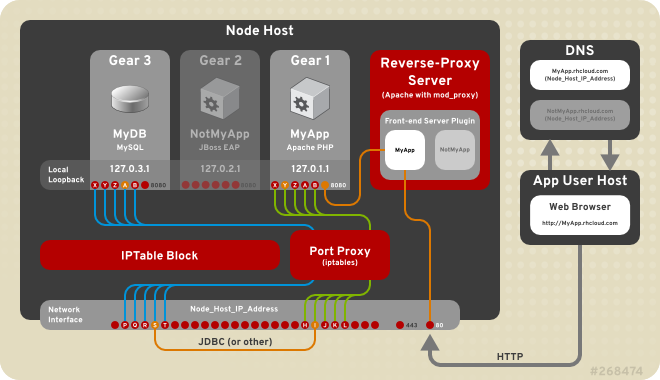Este contenido no está disponible en el idioma seleccionado.
3.4. Security
- SELinux
- SELinux is an implementation of a mandatory access control (MAC) mechanism in the Linux kernel. It checks for allowed operations at a level beyond what standard discretionary access controls (DAC) provide. SELinux can enforce rules on files and processes, and on their actions based on defined policy. SELinux provides a high level of isolation between applications running within OpenShift Enterprise because each gear and its contents are uniquely labeled.
- Control Groups (cgroups)
- Control Groups allow you to allocate processor, memory, and input and output (I/O) resources among applications. They provide control of resource utilization in terms of memory consumption, storage and networking I/O utilization, and process priority. This enables the establishment of policies for resource allocation, thus ensuring that no system resource consumes the entire system and affects other gears or services.
- Kernel Namespaces
- Kernel namespaces separate groups of processes so that they cannot see resources in other groups. From the perspective of a running OpenShift Enterprise application, for example, the application has access to a running Red Hat Enterprise Linux system, although it could be one of many applications running within a single instance of Red Hat Enterprise Linux.
It is important to understand how routing works on a node to better understand the security architecture of OpenShift Enterprise. An OpenShift Enterprise node includes several front ends to proxy traffic to the gears connected to its internal network.
Figure 3.7. OpenShift Enterprise Networking
Warning
